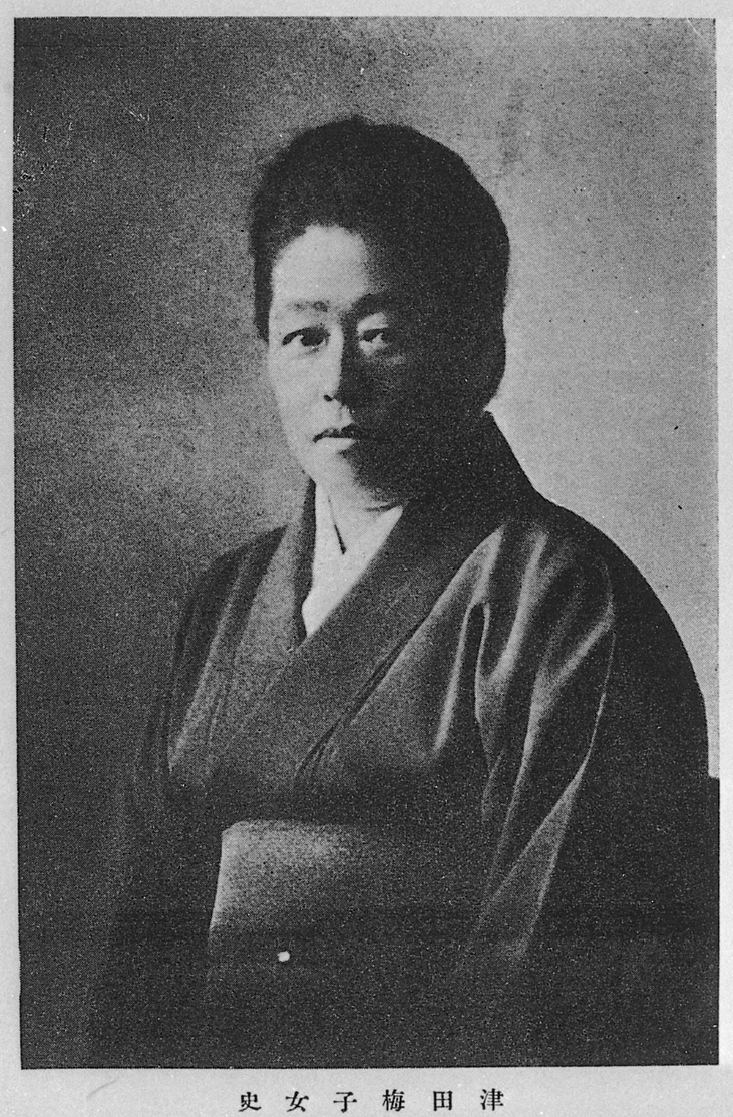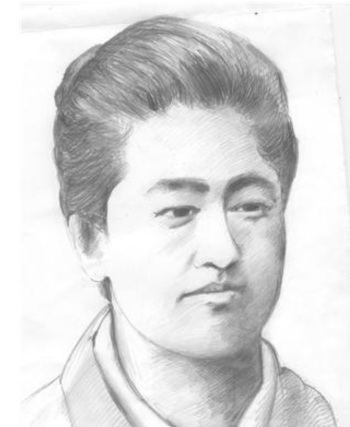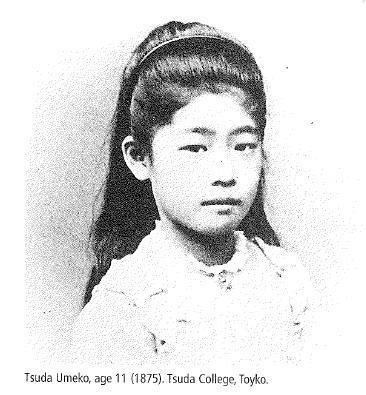Nationality Japan Parents Tsuda Sen Other names Tsuda Mume Books The attic letters | Occupation Educator Name Tsuda Umeko | |
 | ||
Similar People Oyama Sutematsu, Tsuda Sen, Kurara Chibana, Utako Shimoda, Ito Hirobumi | ||
Organizations founded Tsuda College | ||
Episode 48: Pokemon Go, Tsuda Umeko, and Storytelling
Tsuda Umeko (津田 梅子, December 31, 1864 – August 16, 1929) was a Japanese educator, christian and pioneer in education for women in Meiji period Japan. Originally named Tsuda Mume (津田 むめ), with mume or ume referring to the Japanese plum, she went by the name Ume Tsuda while studying in the United States before changing her name to Umeko in 1902.
Contents
- Episode 48 Pokemon Go Tsuda Umeko and Storytelling
- Early life
- Return to Japan
- Second stay in the United States
- Establishment of Tsuda College
- Legacy
- References

Early life

Tsuda Umeko was born in the Ushigome neighborhood of Edo (present Minami, Shinjuku) as the second daughter of Tsuda Sen, a progressive agriculturist and strong proponent of the westernization and Christianization of Japan. In 1871, Tsuda Sen was involved in the Hokkaido colonization project under Kuroda Kiyotaka, and raised the topic of western education for women as well as for men. Under Kuroda’s sponsorship, Tsuda Umeko was volunteered by her father as one of five women members of the Iwakura mission. At the age of six, she was also the youngest member of the expedition. She arrived in San Francisco in November 1871 and remained in the United States as a student until she was 18 years old. Tsuda lived in Washington, D.C. from December 1871 with Charles Lanman (the secretary of Japanese legation), and his wife Adeline. As they had no children, they welcomed her like their own child. Tsuda attended the middle-class Georgetown Collegiate Institute, where she learned English. After graduating, she entered the Archer Institute, which catered to the daughters of politicians and bureaucrats. She excelled in language, math, science, and music, especially the piano. In addition to English, she also studied Latin and French. About one year after arriving in the United States, Tsuda asked to be baptized as a Christian. Although the Lanmans were Episcopalians, they decided she should attend the nonsectarian Old Swedes Church.
Return to Japan

By the time Tsuda returned to Japan in 1882, she had almost forgotten Japanese, which caused temporary difficulties. She also experienced cultural problems adjusting to the inferior position of women in Japanese society. Even her father, Tsuda Sen, who was radically westernized in many ways, was still traditionally patriarchal and authoritarian with regards to women.

Tsuda was hired by Itō Hirobumi to be a tutor for his children. In 1885, she then began to work in a girls' school for the daughters of the kazoku peerage, but she was not satisfied by the restriction of educational opportunities to within the peerage and nobility, and she was not satisfied with the school policy that education was intended to polish girls as ladies and train them to be obedient wives and good mothers. She was assisted from 1888 by a friend from her days in America, Alice Bacon, from 1888. She decided to return to the United States.
Second stay in the United States

Tsuda returned to the United States and attended Bryn Mawr College in Philadelphia from 1889 to 1892, where she majored in biology and education. She also studied at St Hilda's College, Oxford. During her second stay in the United States, Tsuda decided that other Japanese women should have the opportunity to study overseas as well. She made numerous public speeches about Japanese women's education and raised $8,000 in funds to establish a scholarship for Japanese women.
Establishment of Tsuda College

After returning to Japan, she published several dissertations and made speeches about improving the status of women. The 1899 Girl's Higher Education Law, required each prefecture to establish at least one public middle school for girls. However, these schools were not able to provide girls with the same quality of education as that of the boys' schools. In 1900, she founded the Women's Institute for English Studies (女子英学塾, Joshi Eigaku-juku) located in Kōjimachi, Tokyo to provide equal opportunity for a liberal arts education for all women regardless of parentage. The school faced a chronic funding shortfall, and Tsuda spent much time fundraising in order to support the school. Due to her enthusiastic efforts, the school gained official recognition in 1903.

In 1905, Tsuda became the first president of the Japanese branch of the Tokyo YWCA.
However, Tsuda's busy life undermined her health, and she suffered a stroke. In January 1919, she retired to her summer cottage in Kamakura, where she died after a long illness in 1929. Her grave is on the grounds of Tsuda College in Kodaira, Tokyo.
Legacy
The Joshi Eigaku Juku changed its name to Tsuda Eigaku Juku in 1933 and, after World War II, became Tsuda College. It remains one of the most prestigious women's institutes of higher education in Japan. Although Tsuda strongly desired social reform for women, she did not advocate a feminist social movement, and she opposed the women’s suffrage movement. Her activities were based on her philosophy that education should focus on developing individual intelligence and personality.
